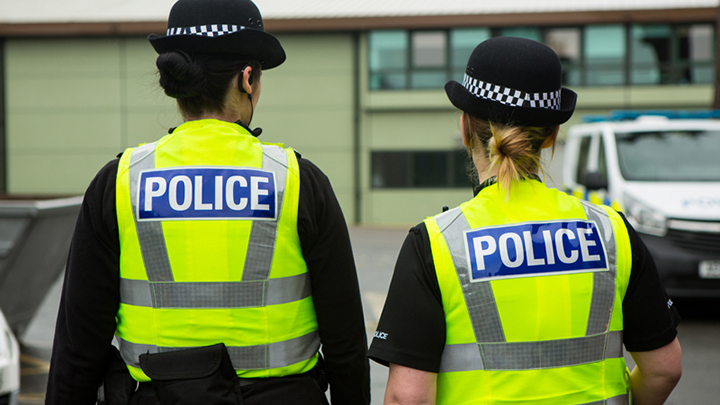The VIPER Firearms Training System was presented to those attending the Post Incident Procedures seminar. Different scenarios were played on a video screen and delegates were put on the spot to assess situations, identify threats and decide whether or not to shoot.
Andy Dann, Managing Director of Dann Developments, explained that volunteers would be using weapons equipped with laser sensors, before inviting two audience members – Chris Fallows, a solicitor with Slater & Gordon, and Sharon Dalton from the Independent Office for Police Conduct (IOPC) to take the test.
They interacted with three scenarios – one being a hostage situation with two gunmen, another a den of drug dealers and a third situation where a mentally ill man was threatening to shoot himself or force police to open fire.
Two serving firearms officers then tackled the simulations, allowing delegates to see the differences in their approach. Afterwards, all four were questioned by delegates on what they saw, what they missed and their thinking in each situation.
PFEW Vice-Chair, Ché Donald said: “It’s always easy to look at an incident afterwards, frame by frame and slowed down, as a jury might do – but what officers see in the situation can be very different. As we saw in the session and heard from firearms officers, when you are faced with a threat your focus will be tunnel vision and periphery observation is not always obtained.”
Later the footage was replayed to the audience and delegates were asked if they had seen one of the armed suspects fleeing the scene among a group of hostages. The firearms officers had – and one explained that “hands are threats – you tend to follow the hands” – they had seen the man was holding a weapon and shouted “gun”, so that the suspect would have been stopped by colleagues.
Federation reps in the audience made the point that a firearms officer who shoots a suicidal man who points a gun at police is likely to be viewed far more harshly by investigators and the public than one who fells a terrorist. It was agreed that Body Worn Video (BWV) is vital in such situations but should never diminish officers’ ‘honestly held belief’ which is key when assessing the rights or wrongs of whether to shoot.













